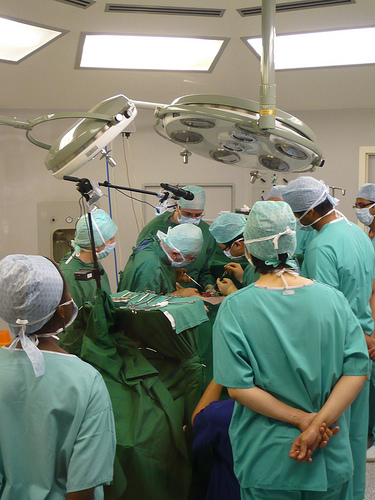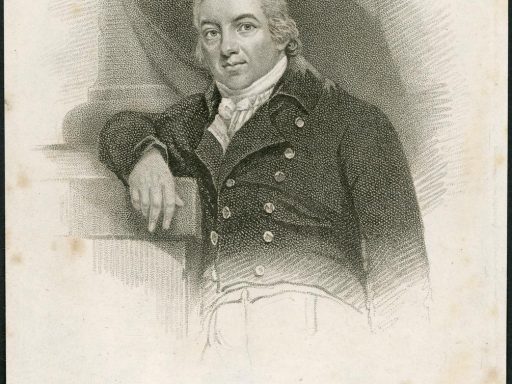Happy 2012 to everyone! The New Year Honours List has been announced and some will be starting off 2012 with new titles or new letters after their names. A number of scientists and medical researchers were honoured this year. Unsurprisingly the Science Museum’s medical collection has its fair share of sirs and dames as well as OBEs and Orders of Merit. Arthur Weston made a number of artificial prostheses while imprisoned in Stalag VIIIB/344 (Lamsdorf) during the Second World War. […]
In the Wellcome medical collections, there are lots of relics relating to famous people, some of which have featured on this blog. Many of them are from the great men of medicine and science, Joseph Lister, Louis Pasteur, as well as military and naval men, Nelson, Napoleon and Wellington. In the Wellcome Library, only one woman’s name made the inscription in the Reading Room: Florence Nightingale. Not so with the collections though. During one visit to the stores I came across […]

Our 1980s operating theatre came back to life this morning, as we brought back together a surgical team from London’s Westminster Hospital to carry out three operations in the way they would have been performed in 1983. The idea is to capture how operations were performed in the past when surgery was very different from how it is today.
Today would have been the 15th birthday of the first cloned mammal, Dolly the sheep. Named after the singer Dolly Parton, Dolly caused quite a storm when the news first broke of her birth. In September 1997, a competition called ‘Do a Design for Dolly’ was launched by the Cystic Fibrosis Trust and supported by Portman Building Society. In March the following year, a 12-year-old girl, Holly Wharton, was announced as the winner. Her design was made from Dolly’s wool […]
Behind every Museum object there can be dozens of stories about the people who made and used it, or are otherwise linked to it. In an upcoming exhibition about the relevance of our collections to family historians we’re going to use one object to illustrate that fact – and we’re hoping that you might be able to help us out. We’re going to take this doctor’s bag and unpack some of the personal histories that are connected to it. It […]
This time of year, gowns and mortar-boards are rented in their thousands in preparation for graduation ceremonies around the country. For medical students, after five years of undergraduate study you can probably imagine their relief. Obtaining a degree in medicine has been the mainstay of the medical profession for centuries. However, licensed and strictly regulated medicine hasn’t always been the most dominant with competition from a range of other practitioners or widely available for all. Even in the history of […]

Stewart Emmens takes a look at the death of one of the greatest enemies of smallpox, Edward Jenner.
After nearly a century’s banishment, one of the most notorious of all alcoholic drinks is set to return to its… er… spiritual homeland, France. Distinctively green and extremely powerful, sales of absinthe have been banned there since 1915. Its geographical origins may lie in Switzerland, but absinthe is forever associated with the bohemian and artistic circles of Paris of the late 19th and early 20th centuries. Not that it was a peculiarly French habit. With its main ingredients of fennel, anise and the […]
Working in a museum presents all sorts of opportunities you never thought possible. But I imagine few curators have uttered the sentence: “I’m just off to Holland to pick up Napoleon’s toothbrush.” This is exactly my task next week. It’s been on loan to the Boerhaave Museum in Leiden and is normally on display at the Wellcome Collection. Regular readers of this blog will know we like an anniversary and it just so happens that Napoleon died on 5th May 1821, […]
The 3rd May marks the 60th anniversary of the Festival of Britain. The Festival celebrated the centenary of the Great Exhibition of 1851 at Crystal Palace as well as advances in British science, technology, manufacturing and art. You won’t be surprised to hear that some of our objects were displayed there. On first look, these fabric samples appear to be simple circular designs. To the trained eye however, the pattern is based on the structure of haemoglobin produced by x-ray […]
How do you develop a new medical tool? Many of the objects in the Science Museum’s collections are the finished article. You rarely see the hours of perspiration or the moment of inspiration that led to the tool being made in the first place. This is why I really enjoy looking at and researching prototypes. Developed by Kenneth Dobbie in the 1960s, these saws were the first step towards creating a power-operated saw for use during hip replacement surgery. He was working as an Electrical Safety […]
The recent pronouncements by Scott Springer – Borough President of Manhattan – about the rat problem in New York received international attention. While they may have been motivated as much by politics as public health concerns, they once again highlighted our fractious relationship with these particular rodent. Few animals have attained such universal levels of loathing, although more than one friend of mine has enjoyed keeping pet rats – ‘Dave’ being one still remembered with great fondness. But even the […]